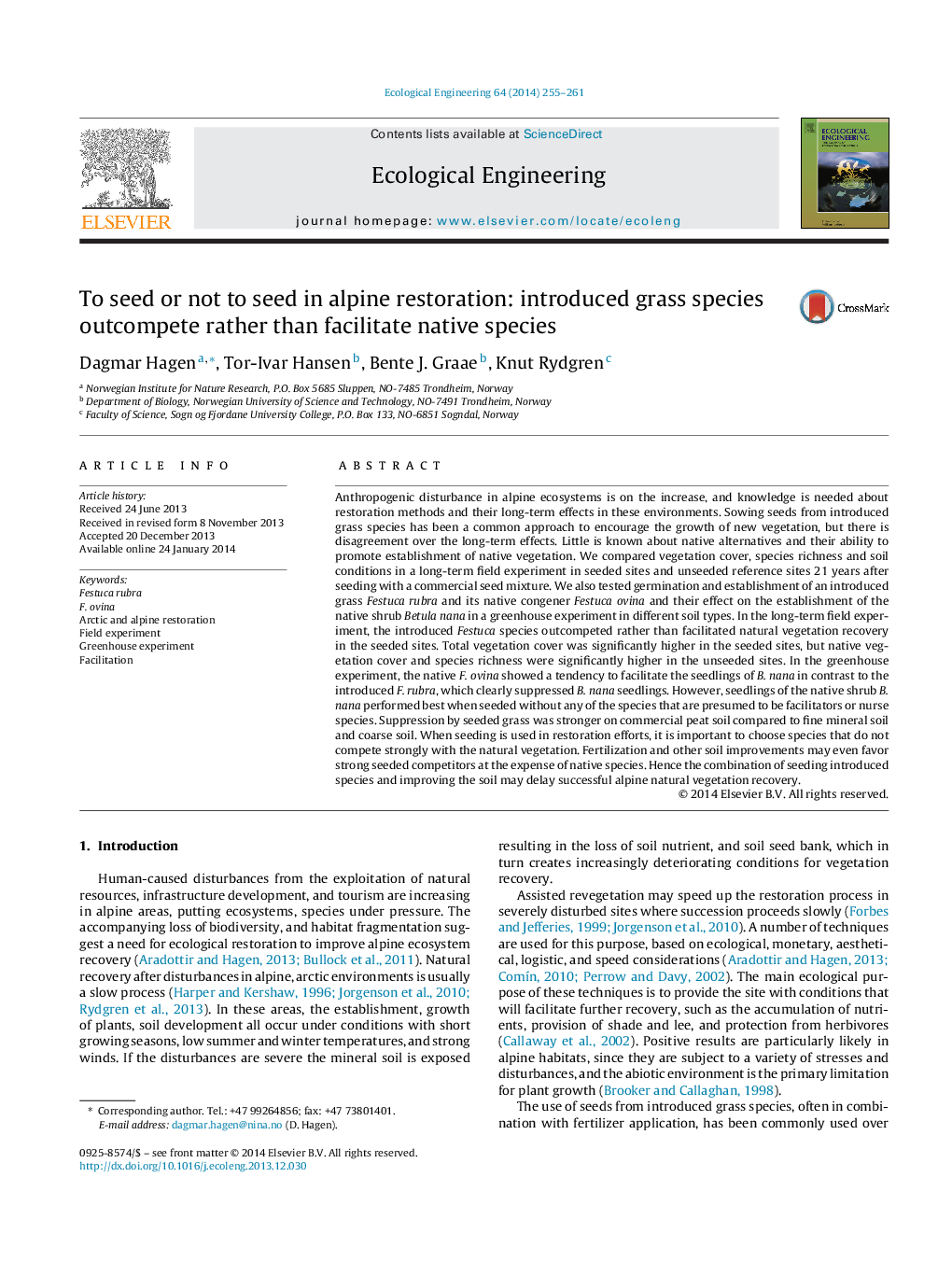| Article ID | Journal | Published Year | Pages | File Type |
|---|---|---|---|---|
| 4389586 | Ecological Engineering | 2014 | 7 Pages |
•We explored the use of introduced and native grass nurse species in alpine restoration.•Introduced Festuca rubra outcompeted rather than facilitated vegetation recovery.•Native F. ovina was a better facilitator for seedlings of Betula nana than F. rubra.•Competition from introduced species was stronger on humus-rich soil types.
Anthropogenic disturbance in alpine ecosystems is on the increase, and knowledge is needed about restoration methods and their long-term effects in these environments. Sowing seeds from introduced grass species has been a common approach to encourage the growth of new vegetation, but there is disagreement over the long-term effects. Little is known about native alternatives and their ability to promote establishment of native vegetation. We compared vegetation cover, species richness and soil conditions in a long-term field experiment in seeded sites and unseeded reference sites 21 years after seeding with a commercial seed mixture. We also tested germination and establishment of an introduced grass Festuca rubra and its native congener Festuca ovina and their effect on the establishment of the native shrub Betula nana in a greenhouse experiment in different soil types. In the long-term field experiment, the introduced Festuca species outcompeted rather than facilitated natural vegetation recovery in the seeded sites. Total vegetation cover was significantly higher in the seeded sites, but native vegetation cover and species richness were significantly higher in the unseeded sites. In the greenhouse experiment, the native F. ovina showed a tendency to facilitate the seedlings of B. nana in contrast to the introduced F. rubra, which clearly suppressed B. nana seedlings. However, seedlings of the native shrub B. nana performed best when seeded without any of the species that are presumed to be facilitators or nurse species. Suppression by seeded grass was stronger on commercial peat soil compared to fine mineral soil and coarse soil. When seeding is used in restoration efforts, it is important to choose species that do not compete strongly with the natural vegetation. Fertilization and other soil improvements may even favor strong seeded competitors at the expense of native species. Hence the combination of seeding introduced species and improving the soil may delay successful alpine natural vegetation recovery.
